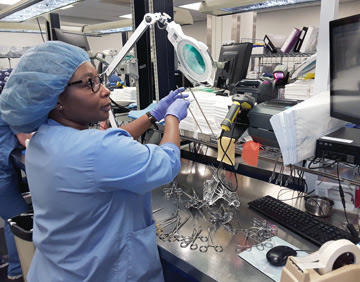A large hospital had so many case carts full of trays backed up during the day they struggled to turn around instrument sets in less than 24 hours. Within 6 months, they cut their sterile processing turnaround time by 40%, reduced errors in half, dramatically increased nurse and surgeon satisfaction with the sterile processing department (SPD), and saved the hospital nearly $600,000. These 5 small and modest changes made big impacts.
1. Get to the root of the problem. When a respected surgeon complained about SPD delays, the staff kept the surgeon's instrument sets in a special location and paid special attention to them. Problem solved, right? Wrong. These kinds of workarounds didn't address the core problem. Perform a root cause analysis. Only a smooth and efficient sterile processing workflow will ensure that every surgeon in every OR has instrument sets delivered on time and in pristine condition.
2. Match schedules to work crunches. This hospital had more techs than they needed at 7:30 a.m. They were mostly idle until about 10 a.m., when the morning cases were finished, carts started coming in and they had to start turning things over quickly. They needed more people from 10 a.m. to 2 p.m. when they were busiest. So, some early-shift employees started coming in later and evening-shift workers started earlier. This shift in staffing to mirror the workload made huge improvements very quickly.
When do the case carts start backing up at your facility? Do you need more people first thing in the morning to take care of instruments used the day before, or do you need more during crunch times during the day? Adapt. Consider adding a runner during your busiest times, someone to make sure everyone has what they need when they need it. If your SPD staff has complained about having to leave their stations to retrieve something, a runner might be the solution.
3. Work toward one-piece flow. The hospital's 10 a.m.-to-2 p.m. crunch wasn't solely because that's when the first group of cases ended. As in many facilities, the OR staff was "batching" the instruments and carts, waiting until they had several used instrument trays before they took them to SPD. This seemingly made sense. They only had to make one trip instead of several when they could be doing other things. They also well-meaningly thought it would be easier for SPD to process more than one cart at one time.
.svg?sfvrsn=be606e78_3)

.svg?sfvrsn=56b2f850_5)